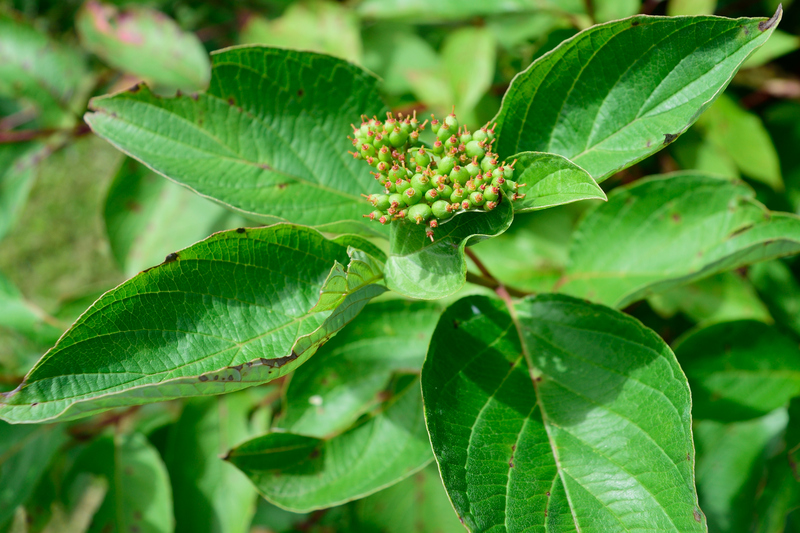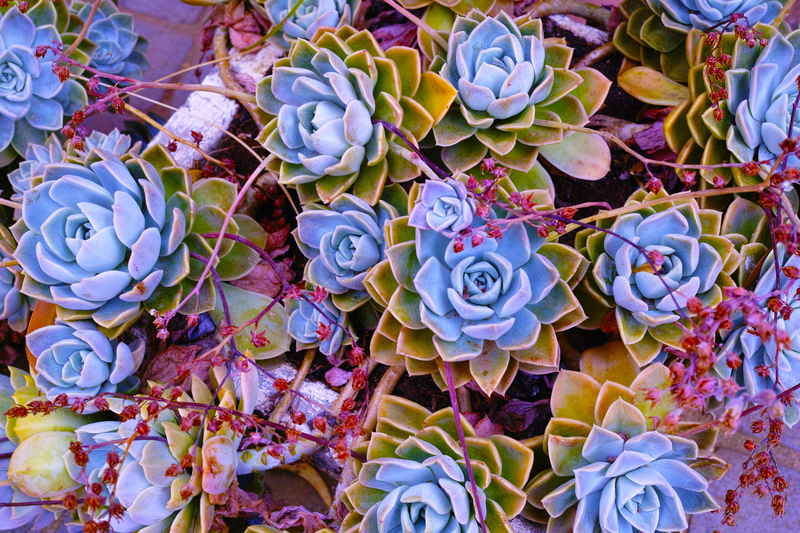Container Gardening: Bringing Nature to Every Corner
Posted on 25/06/2025
Container Gardening: Bringing Nature to Every Corner
Container gardening has revolutionized urban horticulture, allowing individuals to bring lush greenery and vibrant blooms into spaces where traditional gardening isn't possible. Whether you have a sprawling backyard, a small balcony, or even just a sunny windowsill, container gardening lets you enjoy the beauty of plants for both aesthetic and practical benefits. In this comprehensive guide, we'll explore everything you need to know about container gardening--from selecting the right containers to innovative design ideas that will help you create your own thriving, green oasis anywhere.
What Is Container Gardening?
Container gardening refers to growing plants in any type of container--pots, planters, baskets, or even repurposed items--instead of planting them directly into the ground. This versatile approach allows you to bring nature to every corner of your home or outdoor space, regardless of how limited or unconventional the area may be.
Benefits of Container Gardening
- Space Efficiency: Ideal for small spaces like balconies, patios, rooftops, or even windowsills.
- Mobility: Easily move plants to optimize sunlight, protect them from weather, or simply rearrange your space.
- Pest & Disease Control: Isolated containers help in monitoring and managing plant health more effectively.
- Creative Expression: Use containers of different sizes, colors, and textures for unique visual appeal.
- Accessibility: Perfect for those with physical limitations, as containers can be raised to comfortable heights.

Choosing the Right Containers for Your Plants
One of the first steps in container gardening is selecting suitable containers for your chosen plants. The type, size, and material of the container play an essential role in your plants' health and growth.
Common Types of Containers
- Terracotta Pots: Made from clay, these pots allow roots to breathe but dry out more quickly.
- Plastic Containers: Lightweight, affordable, and excellent for moisture retention.
- Ceramic Planters: Glazed for aesthetics and water resistance; often heavier.
- Wooden Boxes: Provide insulation to roots; ensure wood is untreated to prevent toxins.
- Metal Buckets/Troughs: Durable and modern, but may heat up quickly in sun.
- Repurposed Items: Old teapots, tires, baskets, and crates for eco-friendly, creative gardens.
Container Size Matters
Choosing the right container size is crucial. Small containers dry out quickly and might restrict root development, while oversized pots can lead to waterlogging. As a rule of thumb:
- Herbs & Small Flowers: 6-8 inches in diameter.
- Vegetables & Shrubs: 12-24 inches in diameter, depending on root depth.
- Small Trees: 24 inches or larger, to accommodate expanding root systems.
Drainage: The Cornerstone of Healthy Container Gardens
Proper drainage is essential in container gardening. Make sure every container has holes at the bottom to allow excess water to escape, preventing root rot and other water-related diseases.
Best Soil Mixes for Container Plants
Garden soil is typically too dense for containers. Instead, use a high-quality, well-draining potting mix to ensure healthy root growth.
- Standard Potting Mix: Contains peat moss, compost, and vermiculite/perlite for aeration and moisture retention.
- Specialized Mixes: Cactus, orchid, or seed-starting mixes are tailored for plant-specific needs.
- DIY Mix: Blend garden soil (20%), compost (40%), sand/perlite (20%), and coconut coir or peat moss (20%).
For added nutrition, consider mixing in organic fertilizers, compost, or slow-release pellets at the time of planting.
Choosing the Right Plants for Container Gardening
The beauty of container gardening lies in its versatility. You can grow almost any plant in a container, but some perform especially well, thriving in restricted root zones and variable conditions.
Top Plants for Container Gardens
- Herbs: Basil, mint, thyme, chives, rosemary, and oregano are compact and easy to manage.
- Flowers: Petunias, marigolds, impatiens, begonias, and pansies add color and fragrance.
- Vegetables: Tomatoes, peppers, lettuce, radishes, and bush beans are popular edible choices.
- Succulents & Cacti: Require minimal care and look stunning in shallow, decorative containers.
- Small Fruit Trees: Dwarf varieties of lemon, fig, or olive trees can flourish in large pots.
- Foliage Plants: Ferns, hostas, and snake plants bring lush greens indoors or into shaded corners.
Matching Plant Needs with Container Environment
It's important to consider each plant's specific requirements for sunlight, water, and soil. Group plants with similar needs together for optimal results.
- Sun Lovers: Place on south-facing balconies or near sunny windows.
- Shade-Tolerant Types: Ideal for courtyards or indoor container gardens.
- Moisture-Loving Plants: Use larger containers or self-watering systems to retain moisture.
Caring for Your Container Garden
Maintaining container gardens is straightforward, but consistency is key. Here's how you can keep your urban green space thriving:
Watering Tips
- Check moisture daily--containers dry out faster than ground soil.
- Water deeply until you see it draining from the bottom.
- In hot climates, morning or evening watering reduces evaporation.
- Self-watering containers and drip irrigation can simplify the process.
Fertilizing and Feeding
- Use slow-release or liquid fertilizers as per plant type (herbs need less than fruiting vegetables, for example).
- Top up compost or organic matter every few weeks for continuous nutrition.
- Avoid over-fertilizing, which can lead to salt build-up and root burn.
Pruning and Deadheading
- Remove faded blooms and dead leaves regularly to promote healthy growth.
- Pinch back herbs and annuals for bushier plants and more abundant harvests.
Innovative Ideas for Container Gardening
Container gardening is limited only by your imagination! Here are some creative ways to maximize greenery in any space:
Vertical Container Gardens
- Wall-mounted planters: Use hanging pockets or shelves for herbs, flowers, or succulents.
- Pallet gardens: Upcycle wooden pallets as vertical plant walls.
- Trellised containers: Grow climbing beans, peas, or vining flowers in pots with support structures.
Theme-Based Container Gardens
- Herb Kitchen Garden: Arrange pots of culinary herbs near your kitchen window.
- Butterfly & Bee Garden: Plant nectar-rich flowers like lavender and coneflower in clusters.
- Fairy Garden: Miniature plants and whimsical accessories create a magical effect.
- Edible Planter: Combine lettuce, cherry tomatoes, and herbs in a single, large pot for a salad bowl at your fingertips.
Upcycling Everyday Items
- Old boots, tea kettles, and crates make charming, eco-friendly plant homes.
- Bicycle baskets or vintage suitcases add quirky character to outdoor spaces.
- Painted cans, jars, or even colanders allow for personalized DIY planters.
Overcoming Challenges in Container Gardening
Common Problems and Solutions
- Overwatering: Always use containers with drainage holes and monitor soil moisture.
- Root-bound Plants: Repot into larger containers or divide plants annually.
- Pest Infestations: Inspect regularly and use natural remedies like neem oil or soap sprays.
- Nutrient Deficiencies: Supplement with compost or organic fertilizers.
- Weather Extremes: Move pots to sheltered spots or use frost cloths during temperature dips or heatwaves.
The Eco-Friendly Side of Container Gardens
Sustainability and eco-friendly gardening are at the heart of modern container gardening. By repurposing containers and using organic materials, you can reduce waste and promote biodiversity, even in the smallest urban space.
- Recycle & Reuse: Give new purpose to household items as planters, reducing landfill waste.
- Compost: Add kitchen scraps to potting mixes or top-dress containers for natural enrichment.
- Native Plants: Choose indigenous species that require less water and support local pollinators.
Container Gardening Design Tips
The "Thriller, Filler, Spiller" Planting Formula
For visually stunning container gardens, use the "thriller, filler, spiller" formula:
- Thriller: Tall, eye-catching centerpiece (e.g., dwarf grass or canna lily).
- Filler: Midsized bushy plants (e.g., coleus, ornamental pepper).
- Spiller: Trailing plants that cascade over edges (e.g., ivy, sweet potato vine).
Mix colors, textures, and foliage types for dynamic arrangements. Cluster containers in groups of odd numbers for maximum impact, and pair contrasting hues for a vibrant display.
Seasonal Container Gardening Ideas
- Spring: Plant pansies, daffodils, and snapdragons for a burst of early color.
- Summer: Go bold with petunias, geraniums, and sweet potato vines.
- Autumn: Swap in mums, ornamental kale, and asters for fall appeal.
- Winter: Use evergreen shrubs, pansies, and red twig dogwood for color and interest during colder months.
Container Gardening for Beginners: Getting Started
Basic Steps to a Successful Container Garden
- Choose a Location: Find a spot with adequate sunlight and shelter from wind.
- Select Containers and Plants: Pick pots that suit your space and plants matched to your light and care preferences.
- Prepare the Soil: Use quality potting mix, adding compost or organic fertilizers as needed.
- Plant with Care: Follow spacing requirements and water thoroughly after transplanting.
- Maintain: Water, feed, prune, and inspect regularly for pests or disease.

Frequently Asked Questions About Container Gardening
1. Can I grow vegetables in containers?
Absolutely! With the right-sized pots and appropriate soils, you can successfully grow tomatoes, peppers, lettuce, radishes, carrots, and even potatoes in container gardens.
2. How often should I water container plants?
Check the soil daily--containers dry faster than ground beds, especially in hot or windy locations. Most plants need water when the top inch of soil feels dry.
3. Do container gardens need fertilizer?
Yes, as nutrients leach away with watering. Replenish regularly with organic compost, slow-release granules, or liquid feeds for best results.
4. Can I move my containers indoors during winter?
Many containers can be moved inside to protect tender plants from frost. Ensure they get adequate light indoors, or use grow lights if necessary.
Conclusion: Bringing Greenery to Every Corner
Container gardening invites everyone--including city dwellers, renters, and those with minimal space--to experience the joys of nurturing plants. With a little planning and creativity, you'll discover that nature can thrive anywhere--from cozy balconies and rooftops to window ledges and patios.
Start your journey today and let container gardening transform your environment, providing beauty, fresh produce, and a peaceful retreat in every nook of your living space.
Discover the transformative magic of container gardening--bringing nature to every corner of your world!

